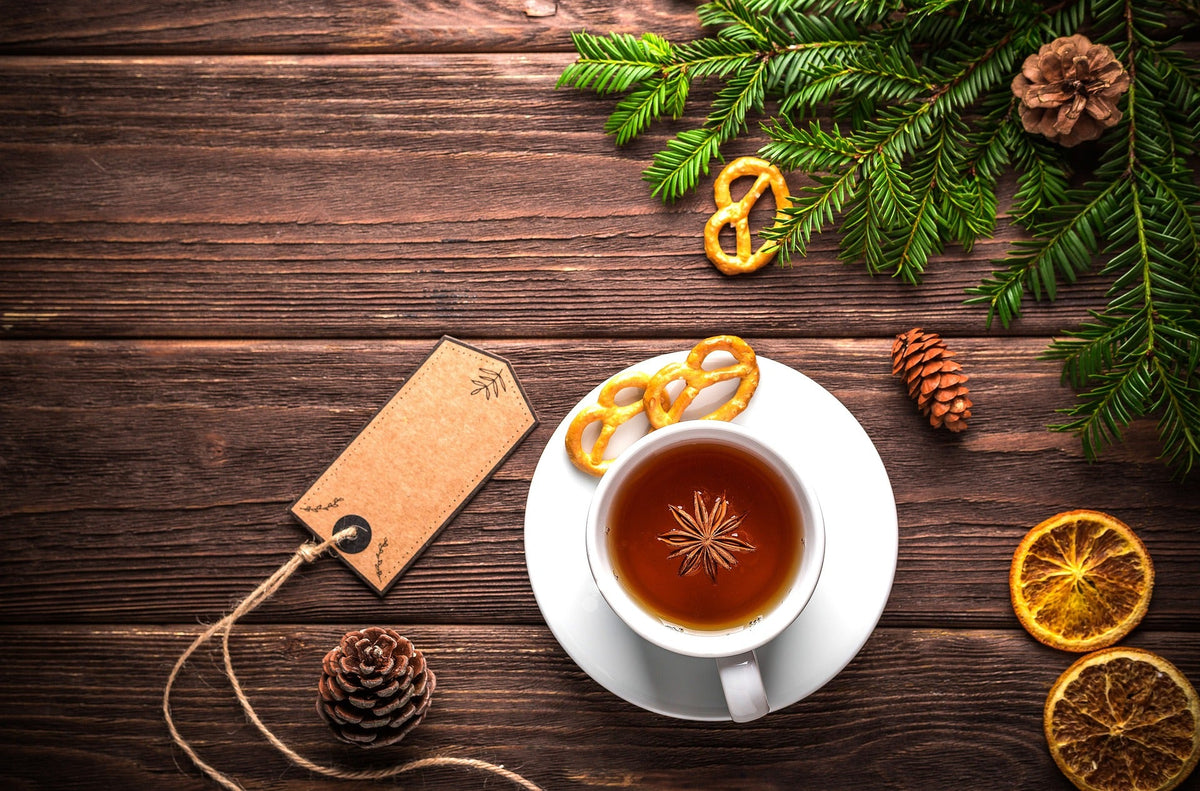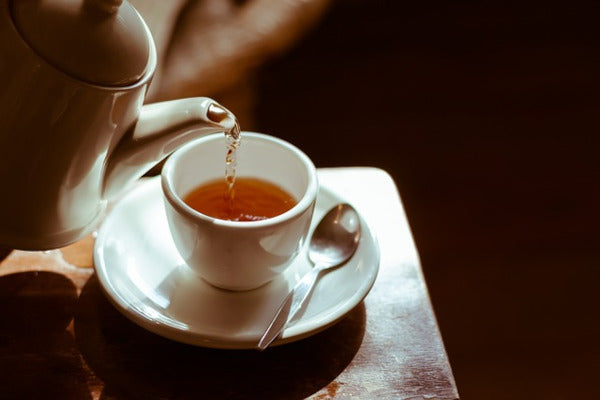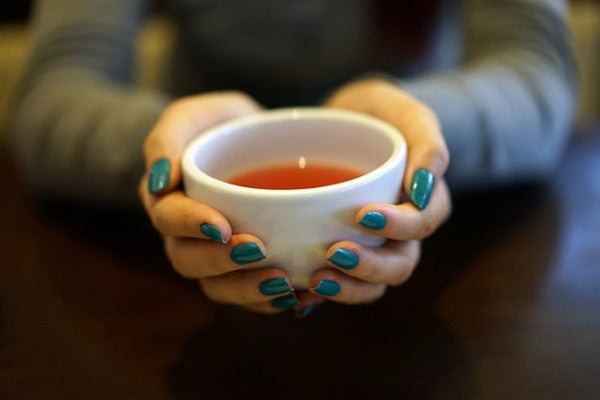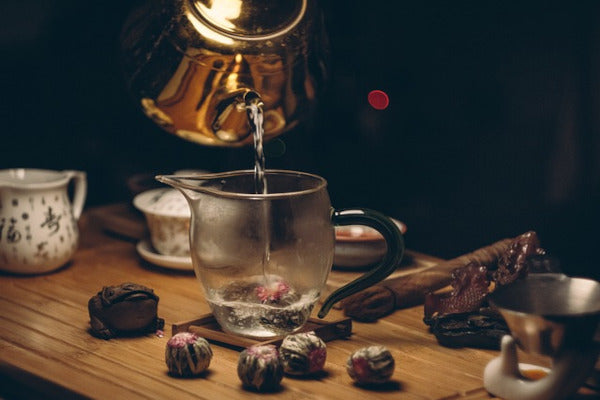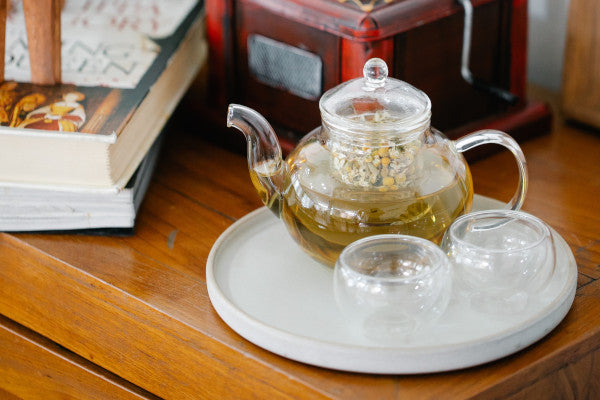WHAT IS HERBAL TEA?
Herbal tea is a term used to describe infusions of herbs and aromatic plants. Although infusions have the word "tea" in their name, they are not tea in the true sense of the word, as they are not made from parts of the Camellia sinensis plant.
Instead, the bark, stems, roots, seeds, fruits, and leaves of other plants are used as ingredients. With the exception of mate infusion and guaius tea, infusions do not contain caffeine.

As diverse as the world of herbs is the world of possible tea blends .
The most important ingredients for medicinal herbal tea infusions.
• Leaves
• Flowers
• Fruits and seeds
• Bark
• Roots
Plant leaves
The leaves of plants contain a highly effective combination of sugars, proteins, and enzymes. They also release aromas and flavors with effects ranging from calming to invigorating, which explains the wide variety of leaves used in infusions.
Lemongrass
Lemongrass , often called lemongrass, is not only an important ingredient in aromatic curry dishes, but also an excellent herbal tea. An evergreen plant from the sweet grass family, it has long, pointed, and sturdy stems.
The plant grows in dense bushes in tropical or subtropical regions: Southeast Asia, southern India, Sri Lanka, the USA and the Caribbean, and lasts three to four years.
Lemongrass is increasingly found in tea blends, often combined with ginger.
In a herbal infusion, the mild lemongrass flavor and surprisingly fresh aroma unfold beautifully. The plant lasts three to four years. In Indonesia and Malaysia, lemongrass has been valued for centuries as a medicinal plant for depression and mood swings.
Mint
There are more than 200 species of mint . The most common variety here is spearmint, which is almost universally known as an infusion. Nana mint, very similar to peppermint, is popular in Arabic cuisine.
And it's obvious, because mint is very refreshing, flavorful, soothing, and invigorating. Consuming it can curb your desire for sweets, making it a natural dietary aid. One of the most popular infusions worldwide is mint tea .

Nettle
Known by many as an unpopular herb for walking, the nettle is little appreciated by many. If you come into contact with its leaves, they sting for a long time. However, the nettle has been known as a medicinal plant for centuries.
More recently, nettles have become especially popular as an herb to support diet and fasting because they are believed to speed up metabolism and have a draining effect.
Rooibos
African Bushmen have been drinking rooibos tea for hundreds of years. The name rooibos means "red bush," which is why it is often referred to as "red bush." Rooibos tea is made from the leaves of the rooibos plant, which grows exclusively in the Cedar Mountains in the heart of South Africa.
The red color is a result of the fermentation process, as the rooibos bush is actually green. Rooibos tea has a calming effect, with a sweet and slightly nutty flavor and no caffeine or tannins.
Rooibos leaves are rich in trace elements, such as copper, iron, potassium, fluoride, zinc, and alpha hydroxy acids, which are used in many cosmetic products. Discover 10 more facts about rooibos tea.
Mate
The small evergreen shrub yerba mate is a spicy plant native to the tropical highlands of southern Argentina, Paraguay, Uruguay, and southern Brazil. The Spanish name yerba mate comes from the Spanish word "hierba," meaning grass, and "mate" from the Quechua word "mati," meaning bowl.
Thus, collectively, this tea means "cup of herbs." Mate can be drunk in a cup or, traditionally, in a gourd, using a straw called a bombilla.
Guayasa
Guayusa is an energizing infusion from Ecuador. This herbal tea, known among indigenous peoples for centuries, is based on the holly species Ilex guayusa. The leaves of the plant contain caffeine, making it a popular morning pick-me-up.
Guayusa consumption is also believed to provide mental clarity and may induce lucid dreams. Guayusa's flavor is smooth and earthy, but without bitter notes. In addition to caffeine, guayusa contains many essential amino acids, vitamins C and D, and minerals such as zinc, calcium, and magnesium.
Flowers
Fresh or dried flowers and petals add color and a subtle aroma to herbal tea blends.
Chamomile
Chamomile is one of the oldest herbs. True chamomile and Roman chamomile are particularly well-known. In ancient Egypt, chamomile was called the flower of the sun god because of the shape of its blossoms and was highly valued for its numerous medicinal properties.
Since chamomile is one of the most widely used herbal teas, this plant is cultivated in many countries today.
It blooms in May or June, depending on the temperature, and gives off a lovely fragrance with a light apple note. Because chamomile has a strong drying effect, this should be taken into account when using it externally.
Lavender
This perennial is a type of shrub that grows up to one meter tall. Lavender is known for the purple color of its flowers. In the areas of southern France where it grows freely, entire landscapes are perfumed with its delicate, calming floral scent.
In a herbal tea infusion, its essential oils and typical lavender aroma are optimally revealed.
Hibiscus
Hibiscus is frequently used in herbal and fruit teas, as it contributes to their intense color and pleasant acidity. It contains anthocyanins, plant pigments responsible for the red color of various fruits.
Hibiscus, which includes around 150 different species, is native to tropical regions. At the same time, hibiscus is also cultivated here. The flowers of this plant are used in tea.
Rose petals
Rosehip is not only a common ingredient in tea, but the rose petals themselves are a popular tea refiner, especially in Asia. Black tea flavored with rose petals has long been a well-known Chinese classic.
When added to black, green, fruit, or herbal infusions, rose petals reveal a delicate and relaxing aroma.
The rose is native to Persia. There are over a hundred different varieties. Confucius reported on roses in China as early as 500 BC.
The rose was introduced from Persia, through Asia, to the Mediterranean region, and then brought to our latitudes by the Romans. Since the Middle Ages, it has also been a part of monastery gardens.
Roots
Roots absorb nutrients from the soil and transport them to the plant's leaves and flowers. They are an ideal ingredient for infusions. In temperate climates, they absorb nutrients from the soil and store them for the winter, when the plant's metabolism is inactive.
It's best to harvest them on a dry spring day, when the plant has just awakened. If the roots aren't too thick or soft, they can be hung to dry or oven-dried. Roasted and dried roots are a caffeine-free substitute for tea.
Ginger
Used primarily as a spice, ginger is also very popular in herbal tea blends. Ginger is an important ingredient, especially in health infusions and teas.
It is grown primarily in India and Asia, but its tubers are available in supermarkets year-round. Ginger is native to Southeast Asia and has a long healing tradition. Drinkingginger tea has a tonic and warming effect.
Licorice root
This fibrous root gives the tincture its sweetness. Its flavor is about 50 times sweeter than common cane sugar. The root juice is primarily used to make licorice.
Only the yellowish, underground part of the root is used. Licorice root has a long tradition as a medicinal plant and remains one of China's ten most important natural remedies.
Although licorice tea is very tasty due to its unique aroma and natural sweetness, it is not suitable for long-term consumption. If the body receives glycyrrhizin for a long time, sodium accumulates in the body, and more potassium is excreted through the kidneys.
In the long term, this can lead to high blood pressure and water retention. If licorice is only an ingredient in herbal tea blends, the glycyrrhizin concentration is very low.
People with high blood pressure, kidney problems, or diabetes should avoid licorice root. The medicinal plant is also not recommended during pregnancy and breastfeeding.
Turmeric
Turmeric has long been known as a spice in its own right and as a main ingredient in curry powder, specifically for its yellow coloring, curcumin. Turmeric is especially popular in the preparation of golden milk.
Turmeric belongs to the ginger family and grows in tropical regions of Asia. Only the underground part of the bush, which can grow to over a meter in height, is used. Its appearance is similar to ginger, but its color is deep yellow.
Although the root has been used as a remedy in Ayurvedic medicine for thousands of years, it has recently become a trendy ingredient in Germany and has been described as a miracle food supplement. Some call turmeric the "magic tuber" or the "spice of life." The extract—yellow curcumin—is believed to be effective against arthritis, diabetes, Alzheimer's disease, and cancer.
Barck
The bark, like the root, is important for nourishing the plant. The bark is increasingly used in infusions.
Cinnamon
The cinnamon tree, from which it is extracted, belongs to the laurel family and is native to South Asia. More than 3,000 years ago, the Chinese used cinnamon primarily as a spice. In the 15th century, cinnamon was also introduced from Sri Lanka, where it was one of the most expensive spices until the 18th century.
The famous cinnamon sticks are made from the tree's bark. The bark is peeled and twisted during the drying process. Most people know cinnamon as a spice, but it's also an effective medicinal plant. Cinnamon belongs to the group of flavorings that resemble sweetness. This way, the tea can be healthily purified.

BUY HERBAL TEA
Here's what to consider when buying herbal tea :
Although herbal teas can also be purchased inexpensively in supermarkets, it's important to make sure the seller provides information about the origin, the parts of the plant used, and the processing.
Infusions made from hand-harvested herbs in a small organic herb garden or even wild herbs have a different flavor and concentration of valuable essential oils than mass-produced infusions.
When purchasing, pay attention to the appearance of the infusions. Do the ingredients have a fresh color? Are the individual flowers and leaves visible? The quality of the herbs depends largely on how they are processed.
If you're looking for the best herbal teas for your hospitality, cafe, or restaurant business, Tetique is the perfect choice. We offer a wide variety of high-quality teas and infusions , carefully selected to ensure the best tasting experience for your customers.
Our herbal tea options include a variety of herbal and fruit blends, perfect for any time of day. Plus, our products are available in different formats and sizes to suit your business needs.
THE HEALING POWER OF INFUSIONS
What tea makes herbal tea?
Herbal teas have been used for centuries in traditional Chinese medicine and Ayurveda. Today, numerous herbal teas and blends are also popular in our country to soothe, relax, or relieve colds.
What is herbal tea used for? Plants and herbs contain complex chemical ingredients that may be incompatible with conventional medications or may cause allergies. Some water-soluble components can reach such high doses that they are comparable to traditional medicine.
For this reason, non-specialists should not create herbal tea blends themselves, but rather leave this task to specialists. Always seek the advice of your doctor before prescribing an infusion.
PROPER PREPARATION OF HERBAL INFUSION
What is the correct way to prepare herbal tea?
To prepare a natural herbal tea, use approximately 14 grams of herbs per liter of herbal tea. Depending on your taste, you can reduce or increase the amount of herbs used to make the infusion. Generally, you can consume approximately one teaspoon of herbs per cup (150 ml).
Bring the water to a boil and add the herbs while it continues to boil.
Depending on the composition of the herbal tea, infusions should be steeped for 5-15 minutes and covered while brewing to prevent the essential oils and vapors from the valuable ingredients from escaping.
Strain the tea and enjoy it unsweetened.
There are also other ways to make a delicious herbal tea by mixing it with other ingredients that enhance its flavors.
If you own a business in the hospitality industry, a café, or a restaurant, we're your best option. At Tetique, we're committed to offering high-quality products and the best possible service to meet your needs. Don't hesitate to contact us and discover how we can help you offer your customers a unique and delicious tea experience, as we're the best tea suppliers in Spain.


